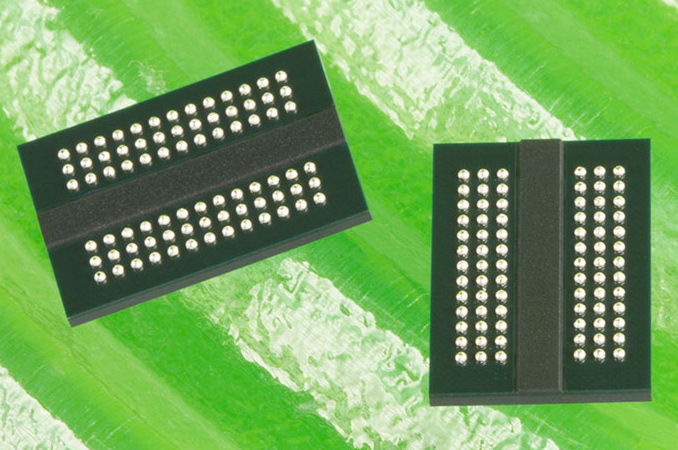Micron Expects to Debut GDDR7 Memory in 2024
by Anton Shilov on June 29, 2023 11:30 AM EST
Micron late on Wednesday revealed plans to introduce its first GDDR7 memory devices in the first half of 2024. The memory is expected to be used by next generation of graphics cards, and deliver performance that will be considerably higher than that of GDDR6 and GDDR6X.
"We plan to introduce our next-generation G7 product on our industry-leading 1ß node in the first half of calendar year 2024," said Sanjay Mehrotra, chief executive of Micron, as part of the company's earnings call.
Micron did not provide any additional specifics about its GDDR7 SGRAM devices that are set to be introduced in the first half of calendar 2024, though some general things about the technology have already been revealed by Cadence and Samsung in the recent months.
Samsung expects next generation GDDR to hit data transfer rates of 36 GT/s, though it's unclear whether they're talking about initial speeds for the new memory, some time later on. In any case, any increase over current 22 ~ 23 GT/s offered by GDDR6X will make the new type of memory more preferable for bandwidth-hungry devices like high-end graphics cards.
Meanwhile, Cadence has previously disclosed that GDDR7 will use PAM3 signaling, a three-level pulse amplitude modulation (which includes -1, 0, and +1 signaling levels), which allows it to transfer three bits of data over a span of two cycles. PAM3 provides a more efficient data transmission rate per cycle compared to two-level NRZ used by GDDR6, thereby reducing the need to upgrade to higher memory interface clocks and the subsequent signal loss challenges that this might cause. GDDR6X currently does something similar with PAM4 (four states), so GDDR7 will be a bit different still. PAM3 ultimately transmits a bit less data per clock edge (1.5 bits vs. 2 bits), but it trades off with less stringent signal-to-noise ratio requirements.
While Micron plans to introduce its first GDDR7 product in the first half of 2024, an official launch of a new memory device indicates conclusion of its development and not its immediate use in commercial products. As GDDR7 employs a new encoding mechanism, it requires brand-new new memory controllers, and hence, graphics processors. While it is reasonable to anticipate AMD, Intel, and NVIDIA to introduce their next generation GPUs in the 2024 – 2025 timeframe, the exact timing of these graphics processor releases remains completely unclear.
For now, Cadence has GDDR7 verification solution for chip designers that need to ensure that their controllers and PHY are compliant with the upcoming specification while they finalize design of their GPUs and other processors.
Source: Micron










12 Comments
View All Comments
Yojimbo - Thursday, June 29, 2023 - link
You should be thanking your lucky stars that consumer GPUs don't use HBM right now. If they did there would be a shortage of them because of the AI frenzy going on. TSMC only has so much CoWoS capacity and people making consumer GPUs with it would have a hard time getting capacity over the big data center GPUs that sell for much, much more money.ballsystemlord - Thursday, June 29, 2023 - link
You have to admit, he has a point.Though I too think it best that the top tier cards utilize HBM. In particular, AMD's LLCC makes GPU RAM usage much more efficient.